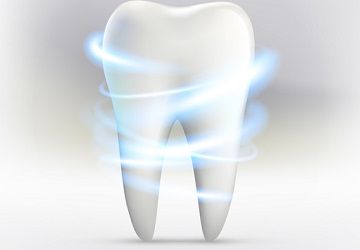- Best Practices New Normal
- Digital Dentistry
- Data Security
- Implants
- Catapult Education
- COVID-19
- Digital Imaging
- Laser Dentistry
- Restorative Dentistry
- Cosmetic Dentistry
- Periodontics
- Oral Care
- Evaluating Dental Materials
- Cement and Adhesives
- Equipment & Supplies
- Ergonomics
- Products
- Dentures
- Infection Control
- Orthodontics
- Technology
- Techniques
- Materials
- Emerging Research
- Pediatric Dentistry
- Endodontics
- Oral-Systemic Health
Dentists Could Use New Imaging Method to Detect Cavities Earlier
A new tool is being developed to help dentists identify and diagnose dental caries much earlier than usual.

Caries continue to be one of the most prevalent dental health issues in adults and children worldwide. Part of the problem with this common oral malady is the difficulty of making the initial diagnosis, which currently relies on one of two diagnostic methods: simple visual inspection by a dentist, or x-ray imaging.
Both current methods of diagnosis are flawed. Dentists usually are unable to see caries until they are advanced. X-rays cannot be used to detect early occlusal caries on the biting surface of the tooth.
Now, a new tool is being developed to help dentists identify and diagnose dental caries much earlier than usual. Scientists in the department of mechanical engineering at York University in Toronto are working to further develop an imaging system that incorporates intensity-modulated laser light together with a low-cost, long-wavelength infrared camera. Put simply, the imaging system detects small amounts of thermal infrared radiation that is given off from dental caries after exposure to a light source.
The new tool, known as a thermophotonic lock-in imaging (TPLI) tool, would allow dentists to detect developing caries much earlier than traditional diagnostic methods allow for.
While not in clinical practice at the present time, test results involving the TPLI tool are encouraging. The effectiveness of the imaging system has already been demonstrated in an experiment comparing its accuracy to that of a trained dental practitioner. The scientists working to develop the system artificially induced early demineralization on an extracted human molar by submerging it in an acid solution. The molar was held in the solution for 2, 4, 6, 8, and 10 days at a time. A TPLI image of the tooth was taken after two days, and there was clear evidence of a dental lesion in the tooth. However, a dental practitioner was unable to spot the lesion visually, even after the tooth had been submerged in the acid solution for 10 days.
The scientists involved with further development of the imaging system say that it is very suitable for integration into clinical practice. In addition to being low cost, the tool is also low weight, making it easy for trained dentists to use. It is also a non-invasive, non-contact apparatus, giving it great potential to become a commercially viable part of the dental industry in years to come.
